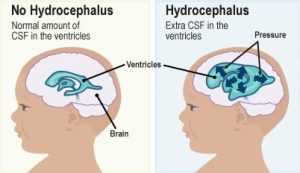Introduction
Assignment 1:3 consists of each student choosing a technical term and writing three definitions of that term: a parenthetical definition, a sentence definition, and an expanded definition. Each student must post their definitions on their appropriate writing team forum. It is expected that students choose a term within their field of study, this allows the diversity of terms that may be new to some people. For this assignment, I chose to define Hydrocephalus.
Parenthetical definition:
The young boy was diagnosed with Hydrocephalus (fluid in the brain).
Sentence definition:
Hydrocephalus is a medical condition where fluid accumulates in the brain, seen primarily in young children. The condition occurs after birth.
Expanded definition:
Hydrocephalus
Operating Principle
Hydrocephalus occurs when cerebrospinal fluid (clear body fluid found in the brain and spinal cord) accumulates in the ventricles or cavities (a hollow hole or chamber) of the brain. If severe enough, it can cause enlargement of the head resulting in brain damage. Hydrocephalus is caused by an obstruction of the brain cavities that prevents brain and spinal cord fluid drainage. To drain the brain fluid, a flexible tube with a valve called a shunt must be inserted. This procedure is known as the ventriculojugular shunt.
Etymology
The medical Latin word hydrocephalus is derived from the Greek word hudrokephalon. Breaking the words down; Greek word hudro means “water” and Kephalē means “head”.
History
Hydrocephalus was first described by early medieval Arabian physicians. At the time of the first diagnosis, Arabian physicians assumed the disease was caused by the accumulation of water in the brain. It wasn’t until the 10th century that Abulkassim Al Zahrawi was able to describe in detail how the drainage of the intracranial fluid was to occur. In the 18th century, Robert Whytt was the first to describe hydrocephalus as a disease. Then in 1952, Nulsen and Spitz created a ventriculojugular shunt (a medical procedure used to drain fluid) with a spring and ball valve that was used to drain the access fluid in the brain. After the 1980s biomedical and neurosurgical techniques continued developing which led to new advances in treatment and diagnosis of hydrocephalus.
Visual
What Does Hydrocephalus Look Like?

Figure 1. A diagram of a one-year-old diagnosed with Hydrocephalus on the right compared to a one-year-old with no Hydrocephalus on the left. The photo on the right shows the blockage of the ventricles and the increased pressure causing swelling of the brain (Piatt, 2019).
Hydrocephalus can occur in anyone; however, a diagnosis has been more frequent in infants and older adults aged 60 and above. Hydrocephalus can occur from either a lack of fluid absorption, a fluid blockage in the ventricles, or there is an overproduction of fluid inside the ventricles. All of which causes excess pressure in the brain resulting in swelling of the ventricles and increased brain pressure resulting in a diagnosis of hydrocephalus.
References
Aschoff, A., Kremer, P., Hashemi, B., & Kunze, S. (1999). The scientific history of hydrocephalus and its treatment. Neurosurgical Review 22, 67–93. https://doi-org.ezproxy.library.ubc.ca/10.1007/s101430050035
Lifshutz, J. I., & Johnson, W. D. (2001). History of hydrocephalus and its treatments. Neurosurgical Focus, 11(2), 1-5. https://thejns.org/focus/view/journals/neurosurg-focus/11/2/foc.2001.11.2.2.xml
Piatt., H. Joseph. (2019, September). Hydrocephalus. KidsHealth. https://kidshealth.org/en/parents/hydrocephalus.html
Leave a Reply